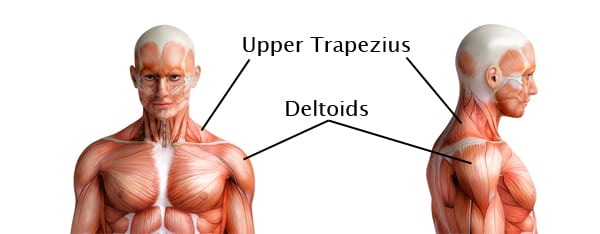Pain With Reaching – Causes of Shoulder Pain
What Causes Shoulder Pain When Reaching?
Interestingly about 44 – 65% of shoulder pain is caused by shoulder impingement (1). Impingement occurs when the rotator cuff muscles are pinched during movement. This pinching occurs as the rotator cuff muscles get smashed between the arm bone and the boney arch on the shoulder blade. No wonder it hurts! Why are you unable to perform these simple tasks pain-free as you once did before? It’s easy to blame the arm; however, you may want to redirect your anger towards the close neighbor: the shoulder blade.
While the shoulder blade may seem like a distant thought on your back, it is an extremely important part of the shoulder. The shoulder blade coordinates with your upper arm during tasks involving reaching at various angles. While it may seem simple, this coordination requires nearly flawless teamwork between the arm and shoulder blade to stay pain-free. The shoulder blade has 17 muscles that help with its movement. All it takes is one muscle not working properly to throw off the whole scheme.
Lack of Mobility
Limited mobility at the shoulder blade is common for those dealing with shoulder pain. Reaching overhead requires the shoulder blade to move outwards, and rotate upwards, eventually tipping backward at the top end of its range.
Proper movement allows for clearance of the arm bone and NO PINCHING of the rotator cuff muscles. Here’s where we throw sitting under the bus. Unfortunately, our prolonged, static, flexed postures make it rather difficult for the shoulder to move along the proper path.
Muscle Imbalance

Of the 17 muscles in the shoulder blade, weakness in the lower trapezius and serratus anterior is the common culprit leading to shoulder pain (2). These muscles allow the blade to properly move out of the way of the arm bone during movement. Combine that weakness with the overworked upper trapezius (shrugging muscle) and deltoids and the result is poor movement and an eventual injured shoulder. Once this muscle imbalance (some too strong and others too weak) becomes prevalent it is a vicious cycle. You can perform these two exercises to help with proper scapular mobility to prevent rotator cuff injuries:
References
- Ludewig, Paula M., Reynolds, Jonathan F. The Association of Scapula Kinematics and Glenohumeral Joint Pathologies. J Orthop Sports Phys Ther. 2009 February ; 39(2): 90–104.
- Scapular and Rotator Cuff Activity During Arm Elevation: A Review of Normal Function and Alteration with Shoulder Impingement. Rev Bras Fisioter, São Carlos. 2009. 13: 1-9.
Want to feel and move your best?
If you’re struggling with pain or injury and would like a personalized plan to feel and move your best, our Physical and Occupational Therapists can help.
Treatment is covered by insurance, no referral is needed to start, and with flexible virtual and in-clinic appointments available, you can find a time that works with your schedule.
Click the button below to get started.
